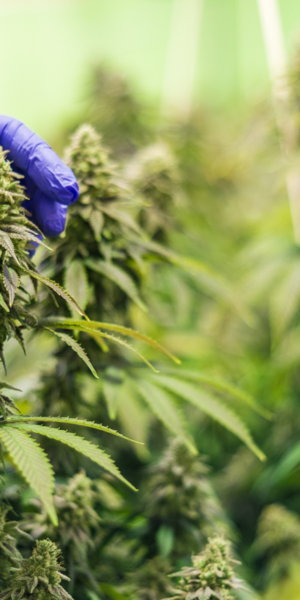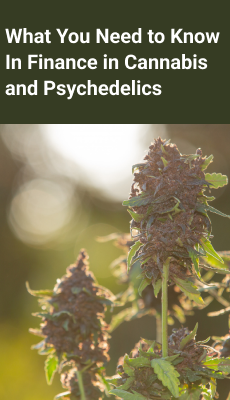Understanding Price Compression and Market Trends in Cannabis
LOS ANGELES—Every CFO needs to know that price compression is a pressing challenge in the cannabis industry, driven by increased competition, oversupply, and constantly shifting consumer demands and preferences. As prices decline, it becomes increasingly difficult to maintain profitability. To combat this phenomenon, CFOs must take strategic actions that include effective cost management, brand differentiation, and diversification of product offerings. Understanding these dynamics is crucial to navigating the ever-changing landscape of the cannabis market.
Understanding Price Compression
Price compression in cannabis refers to a situation where product prices fluctuate within a very narrow range, reflecting a temporary equilibrium between buyers and sellers, and is often seen as a period of uncertainty in the market that can potentially precede a significant price breakout or breakdown.
As new players enter the market and established companies expand their operations, the supply of cannabis products often exceeds demand. This oversupply leads to increased competition, forcing businesses to lower prices to attract customers and/or retain existing ones. While lower prices can benefit consumers, they pose significant challenges for cannabis entities striving to maintain healthy profit margins.
Recent data indicates that the cannabis market is experiencing a significant downturn, with many businesses reporting squeezed profit margins. High taxes, particularly due to regulations like Section 280E of the IRS Code, exacerbate these challenges by limiting deductible business expenses. In this environment, CFOs must be proactive in addressing price compression through strategic financial management.
Managing Costs Effectively
One of the most effective ways to combat price compression is through cost management. Cannabis operators can employ several strategies to reduce operating costs while maintaining product quality. Here are just a few:
- Embracing Automation
Automation offers a tremendous opportunity to reduce costs. By automating repetitive and labor-intensive tasks such as packaging and inventory management, companies can reduce labor costs, minimize human error, and increase overall efficiency. By implementing automated systems, businesses can allocate resources more effectively and focus on higher-value activities that drive growth.
- Vertical Cultivation
This technique can help cannabis producers optimize space and maximize yields while reducing costs associated with land use and utilities. By adopting advanced cultivation practices and technologies, companies can improve production efficiencies and lower costs per unit. This approach not only increases profitability, but also positions businesses to compete more effectively in a price-compressed market.
- Tax Burden Reduction
Strategic tax planning is essential to mitigate the financial impact of high taxes imposed on cannabis businesses. Partnering with experienced tax professionals who are knowledgeable in the intricacies of cannabis taxation can help companies identify potential deductions and credits that may be available. By optimizing tax strategies, cannabis operators can improve their bottom line and better withstand the challenges of price compression.
Differentiating Brands
In a crowded marketplace, brand differentiation is key to standing out from competitors. Companies that successfully establish a unique brand identity can command higher prices and foster customer loyalty.
Creating Unique Selling Propositions
A compelling unique selling proposition (USP) helps cannabis brands communicate what sets them apart from others in the market. This can involve highlighting specific product attributes such as organic cultivation methods, unique terpene and cannabinoid profiles, or innovative consumption formats. By clearly articulating their value proposition, companies can attract consumers who are willing to pay a premium for distinctive offerings.
Investing in Packaging Design
When it comes to brand differentiation, eye-catching packaging design is always a win-win. Cannabis products must not only meet regulatory requirements and maintain quality, but they must also be visually appealing to consumers. Incorporating unique shapes, colors, and textures into packaging can increase brand recognition and create memorable experiences for customers. Additionally, sustainable packaging options resonate with environmentally-conscious consumers, further strengthening brand loyalty.
Leveraging Digital Marketing
In today’s digital age, a vigorous online presence is essential for effective brand differentiation. Engaging social media content, influencer partnerships, and targeted advertising campaigns can help cannabis brands reach a broader audience while building community engagement. By harnessing data analytics to understand consumer behavior and preferences, companies can tailor their marketing strategies for maximum impact.
Diversifying Product Offerings
Product diversification is another essential strategy to combat price compression. By expanding their offerings, businesses can appeal to different consumer segments and mitigate the risks associated with fluctuating demand for specific products.
- Expand into New Product Categories
Cannabis operators should consider diversifying into new product categories such as edibles, beverages, topicals, or wellness products containing CBD or other cannabinoids. Recent trends indicate that consumers are increasingly looking for alternative consumption methods beyond traditional flower products. By tapping into these emerging segments, companies can capture additional market share and increase profitability.
- Bundle Products
Offering bundled products at a discounted rate is an effective way to encourage larger purchases while providing perceived value to customers. Bundling allows businesses to move inventory more efficiently while increasing average transaction amounts. For example, a company can create bundles that include different types of products—such as flowers paired with extracts, edibles, or accessories—to appeal to different consumer preferences.
- Create Premium Offerings
Focusing on high-end or signature products can also help combat price compression by targeting audiences willing to pay more for superior quality or outstanding exclusivity. Limited-edition strains or artisanal products crafted with a unique approach can attract discerning customers who value quality over price alone.
Monitoring Market Trends
To stay ahead in a competitive landscape shaped by price compression, CFOs must remain vigilant to market trends and shifts in consumer behavior.
Understanding Consumer Preferences
As consumer preferences continue to shift, businesses must adapt their offerings accordingly. For instance, there is a growing trend toward wellness-focused products infused with CBD or other cannabinoids known for their therapeutic benefits. Companies that invest in R&D to create innovative formulations will be better positioned to capture this expanding market segment.
Adapting to Regulatory Changes
The regulatory landscape surrounding cannabis continues to shape up at both the state and federal levels. Staying abreast of potential regulatory changes, such as legalization efforts or tax adjustments, can provide valuable insight for strategic planning. In addition, proactive engagement with industry associations, advocacy groups, and cannabis CPA firms can help companies effectively navigate regulatory complexities.
Wrap-Up
Price compression poses significant challenges for cannabis businesses striving to maintain profitability in the face of increasing competition and ever-changing consumer preferences. By effectively managing costs through automation and strategic tax planning, differentiating their brands through compelling USPs and innovative marketing strategies, and diversifying product offerings to meet changing consumer demands, CFOs can successfully navigate these challenges.
Growise CPAs provides customized assistance to cannabis and psychedelics businesses seeking to overcome these hurdles. With diligent accounting and financial management expertise tailored to this sector, Growise CPAs offers a helping hand to guide through the intricacies of cost management strategies, tax optimization techniques, compliance, and market trend analysis to make informed decisions that drive sustainable growth while effectively combating price compression in an increasingly competitive but highly promising landscape.
Copyright Highly Capitalized Network and Growise CPAs © 2025 ALL RIGHTS RESERVED. THANKS TO GROWISE FOR THIS INFORMATION. Growise CPAs is a trusted accounting firm that specializes in supporting cannabis and psychedelics businesses with tailored financial solutions.
Led by Kate Dymedenko, a seasoned CPA with deep expertise in the cannabis sector, Growise CPAs focuses on maximizing profitability for clients by navigating complex tax laws and improving financial strategies. Kate and her team help clients optimize their operations, minimize tax liabilities, and stay compliant in a rapidly changing industry.
To find out how you can maximize profitability for your cannabis business, connect with Kate Dymedenko and the Growise CPAs team. Visit www.growisecpas.com or email [email protected].



































